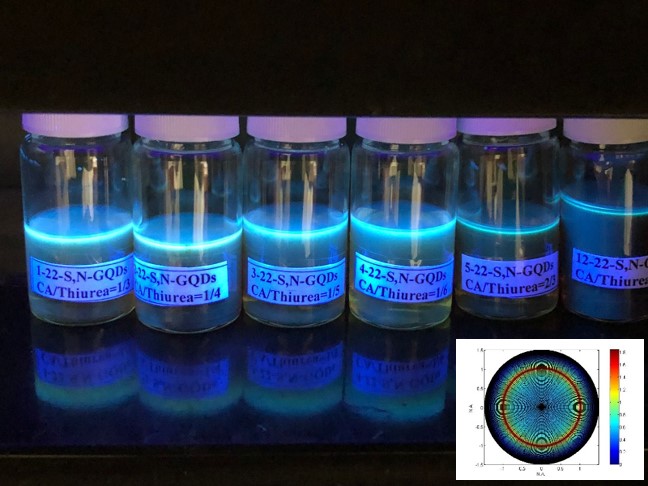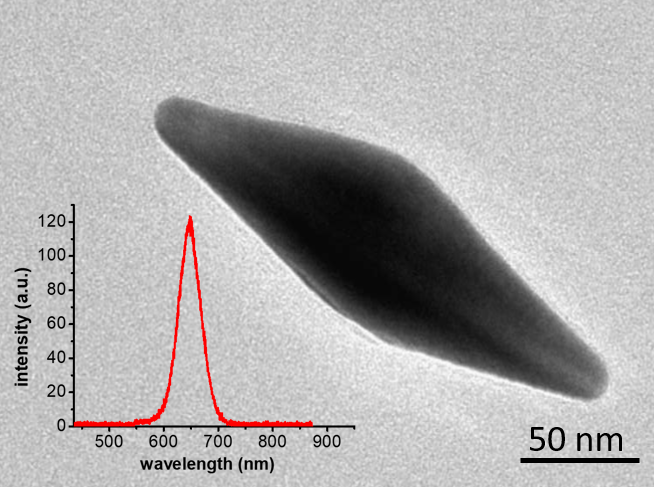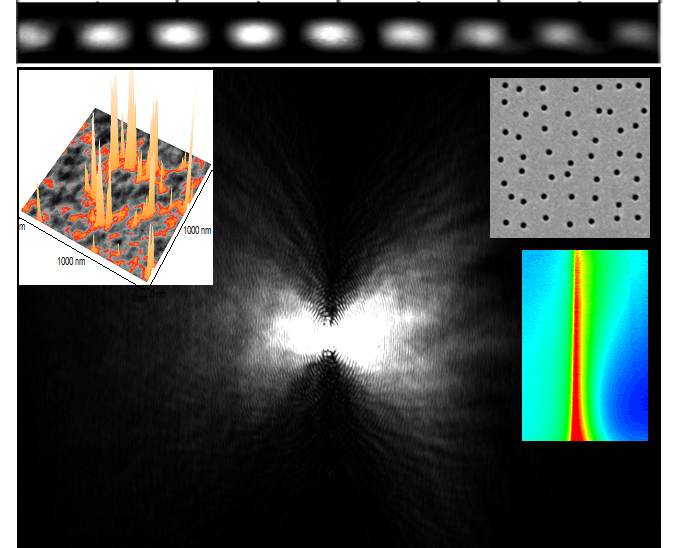Nanophotonic axis
The aim of the Nanophotonic axis is to design nanostructures to enhance light-matter interaction with the help of plasmonics*. It consists of optical experiments and theoretical study concerning the improvement of nanoemitters such as quantum dots, the control of radiation from hybrid nanoantennas and the transport and localization of surface waves.
*Plasmonics: The 2 main ingredients in the field of plasmonic are surface plasmon polariton (SPP) and localized surface plasmon (LSP). A plasmon results in the resonant interaction of light with free electrons inside a metal that leads to a SPP wave, propagating at a metal-dielectric interface or a concentration of light around a nanoparticle in the case of LSP.
|
Nanosources
We study the photophysics and luminescence of quantum emitters such as graphene Quantum Dots (figure) and molecules. Many aspects are under investigation such as atomic doping to control the emission wavelength, polarization analysis to reveal the nature of the emission and local environment interaction to enhance or redirect the emission. References : [1] [2] [3] [4] |
Nanoantennas
The ability of an antenna is to convert the near-field to far-field radiation with a good efficiency in a controlled direction. We study a gap-nanoantenna composed of a gold bipyramid at a nanometric distance from a gold mirror. It creates a nanocavity that opens many interesting applications such as SPP launching or Purcell effect for quantum emitters. References : [1] [2] [3] |
|
|
Transport & Localization
Our team study the transport and localization of SPP waves on structured surfaces such as disordered holes to induce Anderson Localization. Original methods are developped to study these waves such as spatial coherence, dispersion relationships and scattering spectroscopy in the direct and reciprocal space. The main objective is to manipulate the propagation and direction of light at the nanometric level. References : [1] [2] [3] [4] |
Theory & simulations
This 4th axis is complimentary to the others as it provides information about the local density of states and its radiation. The goal is to design 1D structures (multilayers) and calculate the power lost by a dipole inside the structures. A modal decomposition is performed which enables the identification and reconstruction of the modes. The acceleration of the emission probability (Purcell effect) is evaluated as well in the case of Localization of light in 1D, states hybdrization and polaritons. References : [1] [2] [3] |
We are always looking for talented and motivated scientists and students to join our group. Check the open positions or send us your CV and motivation letter for application.
Contact : julien.laverdant(at)univ-lyon1.fr





















